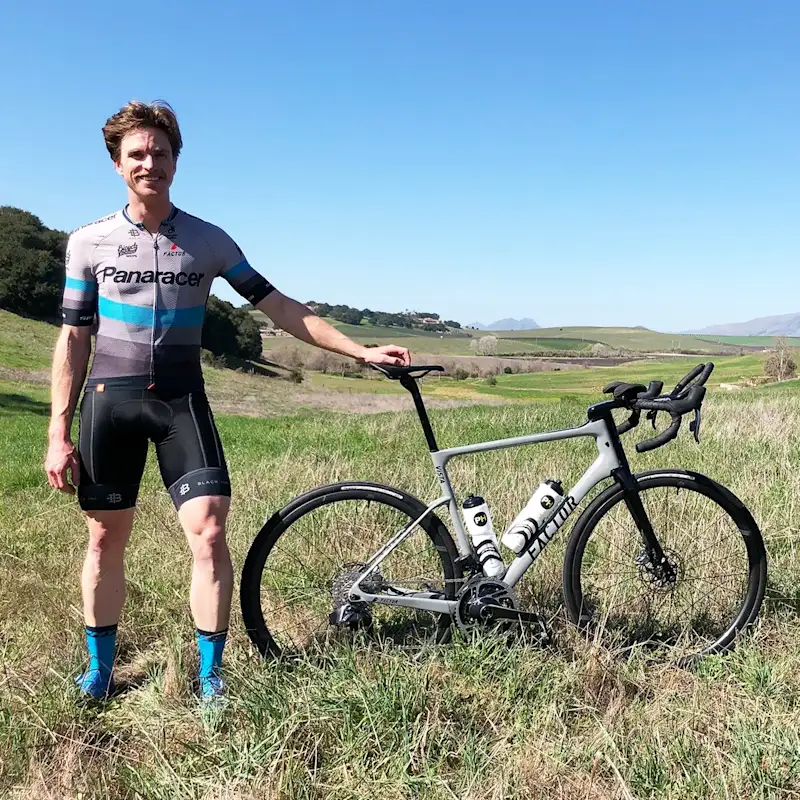
John Borstelmann
Belgian Waffle Ride
John's headline numbers
John's strategy
Fueling
Carbohydrate is the main fuel you burn when racing. Failing to fuel properly is a leading cause of underperformance in longer races.
This is the first time that we’ve seen John consume more than ~80g/h in a race, and he skillfully exceeded the scientific recommendations for a race of this duration and intensity. We’re seeing more and more elite athletes able to consume and tolerate over 90g/h after undergoing gut training, and John is no exception. He’s been practicing by gradually increasing his intake during long training rides to comfortably hit these numbers with no GI distress. On race day, he largely relied on gels, chews and PF Carb & Electrolyte Drink Mix to support his energy needs. This use of different energy products allowed him to fuel frequently without experiencing flavour fatigue during long endurance races, and his energy levels surely benefitted from the sustained high carb intake.
Hydration
Taking on board an appropriate amount of fluid and sodium is essential to maintaining blood volume and supporting the cardiovascular effort needed to perform on race day.
Whilst the absolute amount of sodium and fluid consumed per hour is important, it’s critical to consider these in relation to each other. This is known as 'relative sodium concentration' and it’s expressed in milligrams per litre (mg/L). How much sodium you’re taking in per litre of fluid is more important than the absolute amount taken in per hour.
Sweat sodium concentration (mg/L) is largely genetically determined and remains relatively stable. Knowing how salty your sweat is enables you to replace a good proportion of your sweat losses, which can range from 200-2,000mg/L.
Given John’s losses are High (1,310mg/L), nailing his hydration strategy becomes especially crucial when it’s hot and/or humid.
Learn moreIt can often be helpful to decouple the elements of fuel and hydration during longer events, as this allows for adjustments when conditions change, such as environmental temperatures or unexpected race intensities. Having said that, some athletes still prefer to combine their carb, sodium and fluid intake into bottles for ease, and John has found mixing PF Carb & Electrolyte Drink Mix with PH 1000 (Tablets) works well for him. Considering his high fluid intake, the fact that he only had to pee once (while a mechanic spent the best part of four minutes fixing his broken derailleur two hours into the race) suggests he did a good job of staying hydrated whilst not overshooting his fluid needs. John is prone to cramping and did experience some twinges during the last mile, but this may have been due to muscular fatigue rather than dehydration, as his relative sodium concentration was appropriate for his personal losses.
Caffeine
Beyond the Three Levers of Performance (carb, sodium and fluid), caffeine is one of only a few substances that is proven to improve performance for most endurance athletes as it can help stave off mental and physical fatigue.
John always uses caffeine as part of his race strategy and notices the performance-enhancing benefits that the stimulant provides. Although his intake exceeded the scientific recommendations, John has tested this strategy during training and knows it helps to boost his perceived energy levels.
How John hit his numbers
Here's everything that John ate and drank on the day...
John's weapons of choice
Final thoughts
John's full stats
Data Confidence?
There is an adequate level of accuracy in the data collected and the numbers reported. The athlete manages to recall what they ate and drank including most specifics (brands flavours quantities plausible estimations of volumes). However there are estimations made within the data which affect the overall confidence level in the data reported.